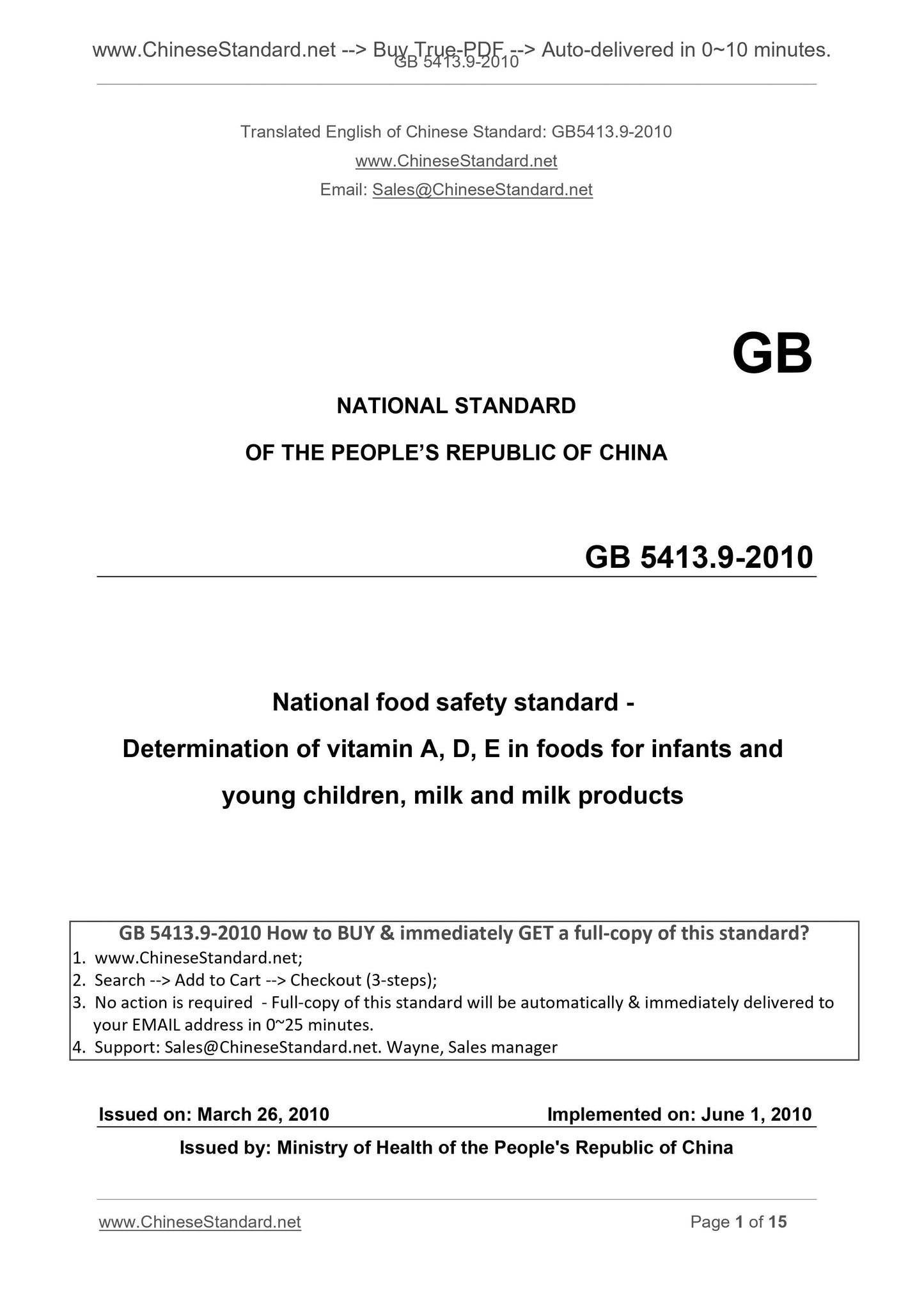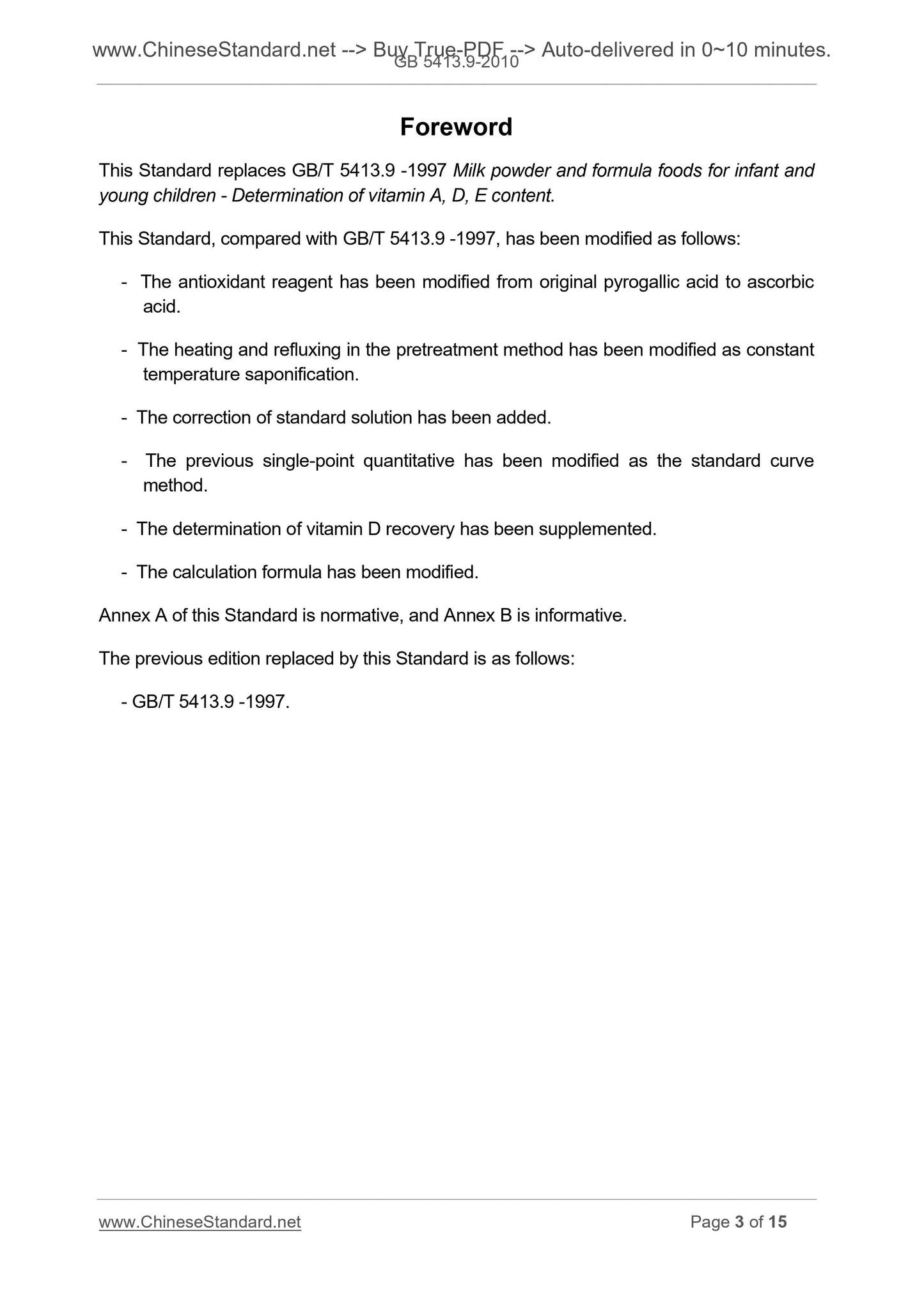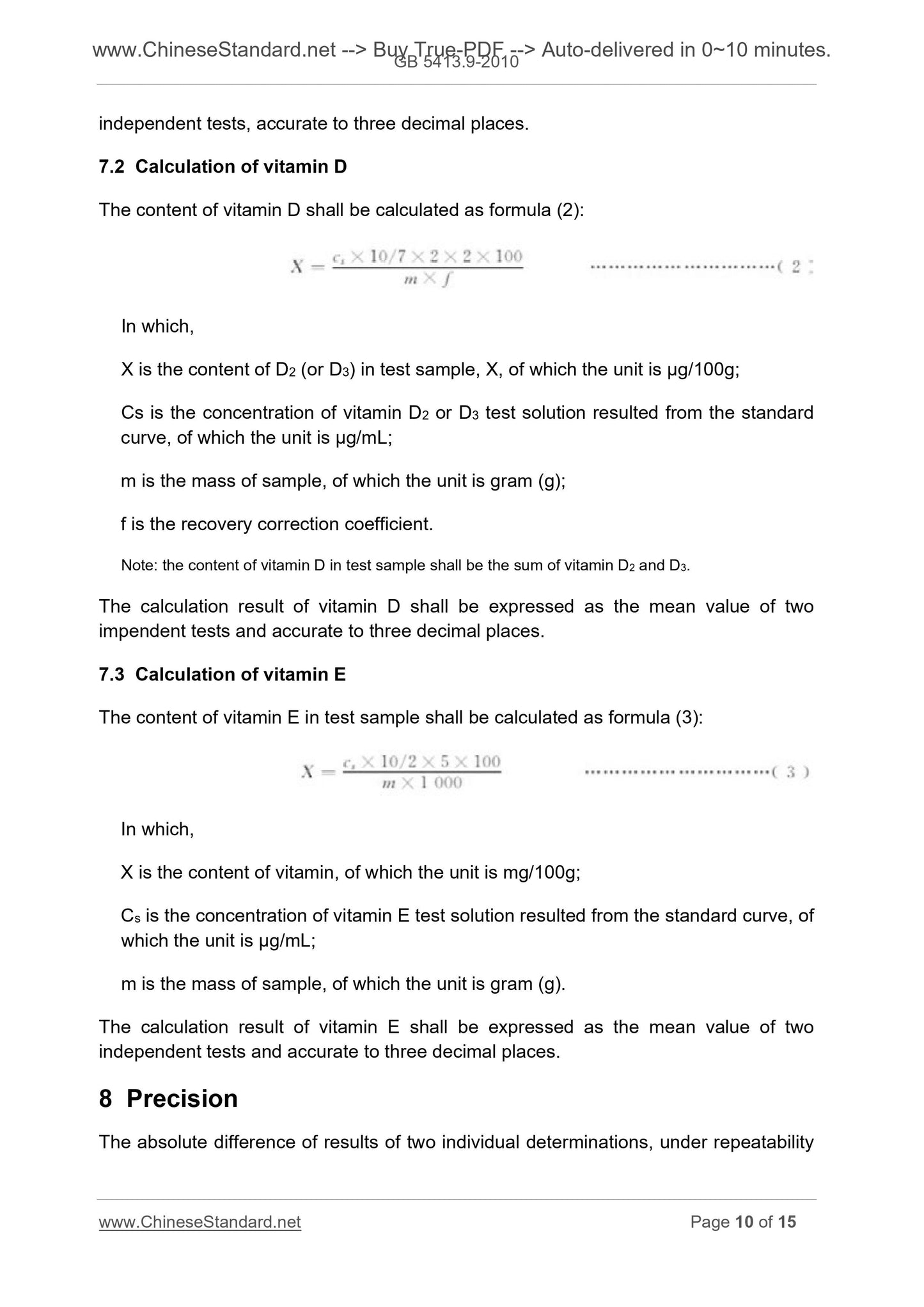1
/
of
4
www.ChineseStandard.us -- Field Test Asia Pte. Ltd.
GB 5413.9-2010 English PDF
GB 5413.9-2010 English PDF
Regular price
$70.00
Regular price
Sale price
$70.00
Unit price
/
per
Shipping calculated at checkout.
Couldn't load pickup availability
GB 5413.9-2010: National food safety standard -- Determination of vitamin A, D, E in foods for infants and young children, milk and milk products
Delivery: 9 seconds. Download (and Email) true-PDF + Invoice.Get Quotation: Click GB 5413.9-2010 (Self-service in 1-minute)
Newer / historical versions: GB 5413.9-2010
Preview True-PDF
Scope
This Standard specifies the method for determination of vitamin A, D, E in foods for infantand young children, milk and milk products.
This Standard is applicable to the determination of vitamin A, D, E content in foods for
infant and young children, milk and milk products.
Basic Data
| Standard ID | GB 5413.9-2010 (GB5413.9-2010) |
| Description (Translated English) | National food safety standard -- Determination of vitamin A, D, E in foods for infants and young children, milk and milk products |
| Sector / Industry | National Standard |
| Classification of Chinese Standard | C53;X82 |
| Classification of International Standard | 67.100.10 |
| Word Count Estimation | 10,183 |
| Date of Issue | 2010-03-26 |
| Date of Implementation | 2010-06-01 |
| Older Standard (superseded by this standard) | GB/T 5413.9-1997 |
| Quoted Standard | GB/T 6682 |
| Regulation (derived from) | Circular of the Ministry of Health (2010)7 |
| Issuing agency(ies) | Ministry of Health of the People's Republic of China |
| Summary | This Chinese standard specifies the infant foods and milk products vitamin A, D, E measurement method. This standard applies to infant foods and milk products vitamin A, D, E determination. |
Share







